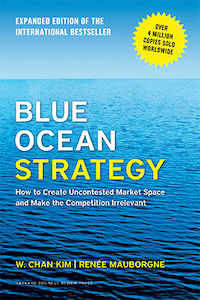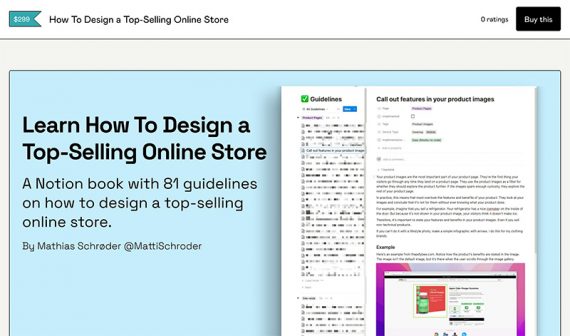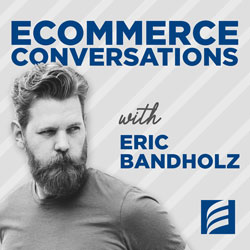The process of starting an ecommerce business is pragmatic, not theoretical. There is no single formula, and it involves doing many things simultaneously.
Here is an analogy.
Imagine you are driving a sports car along a curvy road. As you speed along, your left foot depresses the clutch, and your right hand shifts the manual transmission. Your right foot manages the accelerator and brake as you move in and out of each turn. Meanwhile, your left hand is on the steering wheel, following the road’s contours. Your eyes focus on what lies ahead, helping you to anticipate your next move.
So it is with launching an ecommerce company.
Ideas vs. Formulas
If you search Google for “how to start an ecommerce business,” you will find many guides that describe a straightforward process, populated with simple steps such as “pick a product,” “choose a domain name,” “get a logo,” and “open up your shop using our platform, software, or tool.”
These guides are not necessarily wrong, but they may not be practical. In theory, you do need to pick a product, but in practice, not just any product will do. Drop shipping a low-demand item you found on AliExpress is “picking a product,” but few consumers will likely buy it.
At the end of this guide, you will find a checklist of tasks to start an ecommerce business. But first, I’m going to address how to create a successful ecommerce business. Each section may inspire you to take further action, such as reading an article, studying a book, or examining a tool. The sections are not steps to be done in order but rather concepts to consider. They are:
- Solve a Problem
- Arrange Funding
- Develop a Plan
- Source Products
- Sell Digital Goods
- Checklist of Tasks
- Take Action
- Further Reading
Solve a Problem
I’m updating this guide at the beginning of 2023. It might not seem like a great time to start an ecommerce business. Many in the industry are concerned about a looming recession. Russia’s invasion of Ukraine has impacted energy prices. Inflation and rising interest rates pinch consumers’ pocketbooks.
Regardless, we all need to purchase products. But now, perhaps more than in recent years, your ecommerce business needs a product that solves a problem.
In 2004, W. Chan Kim and Renée Mauborgne, two college professors, released the book “Blue Ocean Strategy.” For them, the business world was divided into red oceans and blue oceans.

Blue Ocean Strategy
A red ocean is full of competition. The water is red because of all of the bloody fights taking place there. A blue ocean represents clear waters.
“Blue ocean strategy is the simultaneous pursuit of differentiation and low cost to open up a new market space and create new demand. It is about creating and capturing uncontested market space, thereby making the competition irrelevant. It is based on the view that market boundaries and industry structure are not a given and can be reconstructed by the actions and beliefs of industry players,” the authors say on their website.
The idea is that a business “sailing” in a blue ocean is likely to be more successful and more profitable than businesses in competitive red oceans. If you’re thinking about opening an ecommerce business, this is a critical concept.
Your ecommerce company can identify and aim for customers not being served by competitors. Your business can bring innovative products to market that offer unique value. In this way, your future ecommerce store can create new demand and capture significant market share, rather than trying to capture market share from competitors.
Consider Uber, the ride-share software firm. Uber’s success is not from being a taxi or limousine service. Its success stems from a software tool connecting drivers and riders while securely managing the payment process.
Before Uber, you might find yourself in the back of a taxi at the airport, waiting for the driver to run your payment card right there in the car. As a rider, you hoped this unknown driver would not skim your card number for later use. Conversely, the driver doesn’t know if your card is stolen.
Uber solved this payment problem. It created a blue ocean.
Your ecommerce launch doesn’t need to be this dramatic. But you do need to offer something that helps consumers solve a problem or meet a need.
Consider, also, Balsam Hill. This ecommerce company’s primary product is a high-end artificial Christmas tree. I have one.
There was a problem in the market for Christmas trees. Artificial Christmas trees were easy-to-use, unlikely to catch fire, and a lot less messy. But they often looked ugly or cheap.
So Balsam Hill created an artificial Christmas tree that offers a natural tree’s beauty and majesty and the benefits of an artificial one. Customers are happy to pay $1,000 or more for Balsam Hill’s products.
This is a common scenario for blue ocean businesses.
“We set out to quantify the impact of creating blue oceans on a company’s growth in both revenues and profits in a study of the business launches of 108 companies,” Kim and Mauborgne wrote in their book’s first chapter.
“We found that 86 percent of the launches were line extensions, that is, incremental improvements within the red ocean of existing market space. Yet they accounted for only 62 percent of total revenues and a mere 39 percent of total profits. The remaining 14 percent of the launches were aimed at creating blue oceans. They generated 38 percent of total revenues and 61 percent of total profits.”
If you can create your ecommerce business in a blue ocean, you should earn more profit than trying to sell head-to-head against established competitors.
Mauborgne and Kim suggest that there are four approaches to creating blue oceans. Two of these specifically apply to new businesses.
- Value innovation involves offering unique products or services that meet consumers’ needs in innovative ways. Don’t just sell protein powder and compete with GNC or Bodybuilding.com. Instead, sell individually formulated protein powders based on specific individuals, for example.
- Redefining market boundaries targets new customers or creates new market segments. Stryx, for example, launched in 2017 as a men’s cosmetics brand that sold directly to consumers from its ecommerce site. It is now in Target stores. It expanded the cosmetics market to find a calm blue ocean for growth.
The remaining two approaches focus on changing an existing business.
- Aligning with the blue ocean strategy organizes the company’s resources and processes to support a new product or service.
- Overcoming organizational hurdles addresses risk-averse cultures or siloed departments.
The ultimate aim is to solve a problem or address an underserved market.
Arrange Funding
It is possible to pay about $39 a month for an ecommerce platform and $29 or less a month for a drop-shipping service such as Oberlo or Spocket. Thus you could start your ecommerce business for something like $68.
Some kids spend more on lemonade stands, and they are more likely to make a profit.
It will take more than the cost of dinner to launch your ecommerce business. How much money you need varies based on the particulars of your planned company. But in my experience, you will require between $5,000 and $50,000 or more.
The U.S. Small Business Administration recommends estimating your startup expenditures, which could include:
- Office space,
- Equipment and supplies,
- Communications,
- Utilities,
- Licenses and permits,
- Insurance,
- Lawyer and accountant,
- Inventory,
- Employee salaries,
- Payments to contractors,
- Advertising and marketing,
- Market research,
- Website development.
To this, an ecommerce startup might add the costs of:
- Inventory,
- Packaging,
- Fulfillment and warehousing services,
- Returns,
- Software.
Before you launch, research each of these expenses. Estimate both one-time and recurring expenditures. You’ll want enough cash to pay for at least a few months.
You have options when it comes to raising money.
- Save it up. You’d love to start your ecommerce business now and generate sales immediately. You may have been hoping that this guide included a 5-minute plan to do that. But no such plan exists. If you fund the startup yourself, you may need to save patiently. Consider automatically depositing a portion of each paycheck into a savings account to start your business in a year or two.
- Secure loans. When you borrow money to start your business, you retain full control and ownership, but you will need to pay interest, and you’ll have to convince a banker that your company is viable. The SBA facilitates loans, so you may want to schedule an appointment with your local Service Corps of Retired Executives (SCORE) office at the SBA. The volunteers there can advise you on your business and how to seek a loan.
- Crowdfunding. Modern crowdfunding takes a few forms, but in many cases, you are not selling ownership shares in your company; rather, folks are funding your business in exchange for gifts or products. Strøm electric bikes, for example, raised more than $2 million with its 2018 Indiegogo project, a pre-order program wherein folks could fund the business in exchange for a bike once the company began manufacturing.
We’ve addressed crowdfunding many times. One entrepreneur shared her experiences at “Building an Ecommerce Business, Part 14: Using Kickstarter.”
- Find investors. In this scenario, you would convince individuals or businesses to invest in your startup in exchange for a share of ownership and, often, an active role in the decisions. The SBA described five steps for doing this.
a. Find an investor. “Look for individual investors — sometimes called ‘angel investors’ — or venture capital firms. Be sure to do enough background research to know if the investor is reputable and has experience working with startup companies.”
b. Share your business plan. “Investors will review your business plan to make sure it meets their investing criteria. Most investment funds concentrate on an industry, geographic area, or stage of business development.”
c. Go through due diligence review. “The investors will look at your company’s management team, market, products and services, corporate governance documents, and financial statements.”
d. Work out the terms. “If they want to invest, the next step is to agree on a term sheet that describes the terms and conditions.”
e. Investment. “Once you agree on a term sheet, you can get the investment. Once a venture fund has invested, it becomes actively involved in the company. Venture funds normally come in ’rounds.’ As the company meets milestones, further rounds of financing are made available, with adjustments in price as the company executes its plan.”
For additional funding ideas, check out:
- “11 Mistakes to Avoid When Seeking Business Financing,“
- “Building an Ecommerce Business, Part 13: Raising Money.“
- “Quiet Light Founder on State of Ecommerce M&A.”
A word to the wise: Be realistic but undaunted in your estimated expenses and your funding plans.
Imagine it was your dream to open a business selling vintage apparel and art. You have a vision of a brick boutique in a hip neighborhood. And your imagined online store is amazing, too, with videos and a photo gallery for every item. When you ship an order, you put it in a custom black box emblazoned with a gold logo.
But when you estimate your expenses, you discover you need $150,000 to launch. Don’t give up. Start small.
What if you opened your business on eBay only? You wouldn’t need to lease a store or build a website. You could even forgo the branded packaging. You could start with a few thousand dollars in inventory. Later, you could grow the business to meet your dreams.
Beardbrand, a company that sells men’s grooming supplies, didn’t initially sell anything. Instead, it began as a YouTube channel. Co-founder Eric Bandholz, the host of “Ecommerce Conversations,” Practical Ecommerce’s podcast, started by building an audience. His low-cost approach meant that when it was time to start selling beard oils, his company didn’t have to depend on advertising. Other successful merchants have adopted similar strategies.

Before launching its ecommerce site, Beardbrand developed an audience on its YouTube channel around men’s grooming.
Develop a Plan
Yogi Berra, the famous baseball manager known for his witticisms, once said, “If you don’t know where you’re going, you’ll end up someplace else.”
He’s right. You might want an ecommerce business, but if you haven’t taken the time to think about it and plan it, you’ll end up someplace else.
“Many people have business ideas throughout their careers, but often, these ideas never come to fruition, or they get lost amidst our daily obligations,” wrote finance expert Sean Heberling in an article for Toptal, the freelance marketplace.
He continued, “Interestingly, studies support the notion that those who write business plans are far more likely to launch their companies. Data from the Panel Study of Entrepreneurial Dynamics suggests that business planners were 2.5 times as likely to [launch a company]. The study, which surveyed more than 800 people across the United States who were in the process of starting businesses, therefore concluded that ‘writing a plan greatly increased the chances that a person would actually go into business.'”
Creating a business plan follows from differentiating your company and funding it. Thus composing a plan can help with those concepts, too.
You don’t necessarily need to follow a template, but your plan should address these areas:
- Description of your company. Sum up in a short paragraph what the business does, how it earns money, and what separates it from the competition.
- Market analysis. This is not as technical as it might sound. Simply state what you know about the market for the products you would sell. The analysis should demonstrate that you know your competitors and why you could succeed against them. If you’re planning to create a blue ocean, the analysis should explain how and why.
- Potential customers. Describe the problem your business would solve or the need it would fulfill. Describe your company’s would-be customers and how it would acquire and serve them.
- Financial projection. This section should convince an outside party — think loan officer, investor, or even supplier — that your business is viable. Include projected income statements, balance sheets, and cash flow statements. If you’re unfamiliar with those documents, hire an accountant.
- Business model. There are roughly six ecommerce business models, including four that might apply to you: (i) business-to-consumer, which also includes direct-to-consumer; (ii) business-to-business; (iii) business-to-government; and (iv) consumer-to-consumer. Nuances for each include subscription services and curated buying.
For more, see “6 Leading Ecommerce Businesses Explained.”
- Sales channels. Will you sell on eBay at first and add a website later? Will you sell via the Amazon marketplace? Invest the time to understand how each channel works, its benefits, and how your business could compete.
- Marketing plan. Articulate how your business will attract customers. Will you build an audience first, such as Beardbrand, or rely on pay-per-click advertising? How much would it cost? How will you measure marketing success?
Consider visiting the Small Business Administration’s article on business plan composition.
And don’t get discouraged. Creating a business plan takes work but will contribute to your success.
Source Products
In my experience, it’s a bad idea to source your products via a wholesale drop-shipping service. These companies can provide quick access to items to sell, but it will be extremely difficult to differentiate your brand and earn a profit. It’s not impossible, just unnecessarily hard.
Instead, focus on what successful retail businesses have done for years: establish supply chain relationships. This could take a few forms.
- Buy directly from brands. If you want to sell Nike shoes and apparel, you may be able to buy from Nike. If you wish to sell Carhartt, you may be able to buy directly from Carhartt. Those companies will likely have minimum order requirements, but it is possible.
- Buy from distributors. If Hasbro, for example, won’t sell to your company directly, find a distributor that will sell you Hasbro products.
- Manufacture your own products. If you want to sell handmade furniture, consider building it yourself. There are many products you could create, including digital goods such as software, ebooks, and similar.
- Use a contract manufacturer. This is a favorite among direct-to-consumer sellers. Many companies will manufacture a product for your business.
- Purchase used or bulk products. You can find excellent used items to sell, such as on eBay or classified ad sites.
In each case, do some leg work. Some suppliers will want cash upfront. Others may require a business plan before extending credit.
It is worth mentioning that the ecommerce supply chain has been a challenge in recent years.
First, the Covid-19 pandemic created havoc. Products that normally flowed easily from factories in Taiwan or China to warehouses in the United States and worldwide suddenly because almost impossible to get.
And just as supply chains were becoming more reliable, Russia invaded Ukraine.
Here is the point. It was much easier to develop an ecommerce supply chain in 2019 than in 2023. Make sure your new business can keep key products in stock.
Sell Digital Goods
Ecommerce has been synonymous with selling physical goods — books, toys, clothing, or anything else you could hold and touch.
This is changing. The term and the businesses it identifies are now often selling digital goods that shoppers download.
Here is an example. Mathias Schrøder is an ecommerce conversion coach and consultant. In 2022, Schrøder was selling an 81-page ebook, “How To Design a Top-Selling Online Store,” for $299 using the Gumroad platform.

Mathias Schrøder’s ebook is a product that can be and is sold via ecommerce.
This ebook had no physical form, but its sale is most certainly a form of ecommerce.
Selling digital products involves creating content or software. So instead of finding a supplier, you might be making the product yourself or hiring someone to make it for you.
You could also combine tangible and digital goods. For example, an online auto parts store might sell after-market replacement items and downloadable guides (video or written) that show shoppers how to install those products.
Checklist of Tasks
So far I’ve described five concepts to help launch a successful ecommerce business. The concepts are interrelated to the overall business creation process — remember the car driving analogy above?
Some tasks, however, need to be checked off a list regardless of the business’s niche, products, or target customers.
Market research. Understanding the marketplace is essential if you hope to create a blue ocean or a successful addition to a red ocean. Consider the following steps.
- Estimate demand. Will people or other businesses buy your products?
- Total available market share. How many people or businesses could theoretically buy your product or service? What percentage use your competitors?
- Timing. Is now the best time to start your business? Are your potential customers going through a downturn? Have they changed their buying habits?
- Price. Could you sell your products or services for a profitable price? Why or why not?
Legal responsibilities. Your new company will have some legal responsibilities regardless of the location, such as:
- Register your business name.
- Establish trademarks, if needed.
- Get a federal tax identification number.
- Register with appropriate state or provincial agencies.
Establish your brand. You’ll need at least a few brand elements. These may include:
Select software. Your ecommerce business will need software to, at the very least, present your company’s products online.
This is not a small task. You could build something yourself (with the help of developers). Or you could use an established platform, which has the benefit, typically, of free customer support that’s often critical to new entrepreneurs. What about using marketplaces such as eBay, Amazon, or Walmart?
Regardless, here are some of the software services you may need.
- Ecommerce platform.
- Content management platform.
- Customer relationship platform.
- Order processing software.
- Product information management (PIM) software.
- Email and marketing-automation platform.
Take Action
You have reached the end of this practical guide to starting an ecommerce business. Hopefully it’s different than the other such guides in at least two ways.
First, I am not trying to sell you software or other services. I’m offering suggestions based on 20-plus years of industry experience.
Second, I’m not trying to make starting a business seem easy. It is not. It will require you, the entrepreneur, to learn and put those findings into practice.
It is time for you to take action. Start the business that could change your life.
Further Reading
- Eric Bandholz’s weekly podcast episodes and his 19-part “Building an Ecommerce Business” is essential reading (and listening) for entrepreneurs. Each installment is an interview with an ecommerce merchant around a critical topic.
- Credit card payments are fundamental to ecommerce. Contributor Mike Eckler’s 3-part “Credit Card Processing FAQs” and 2-part “Primer on Merchant Accounts” are enormously helpful.
- “The Web Marketing Checklist” was first published roughly 20 years ago. The latest update, from me, offers 40 ways to generate traffic to an ecommerce site.
- Many ecommerce businesses rely on traffic from organic search results at Google and other search engines. Our comprehensive “SEO” instruction, including Jill Kocher Brown’s 12-part “SEO How-to,” untangles a confusing process.
- Since 2005 we’ve published thousands of articles on launching and growing an ecommerce business. Critical areas for new merchants include email marketing, fulfillment and shipping, inventory, Amazon, Google Analytics, Google Ads, and product pages.




